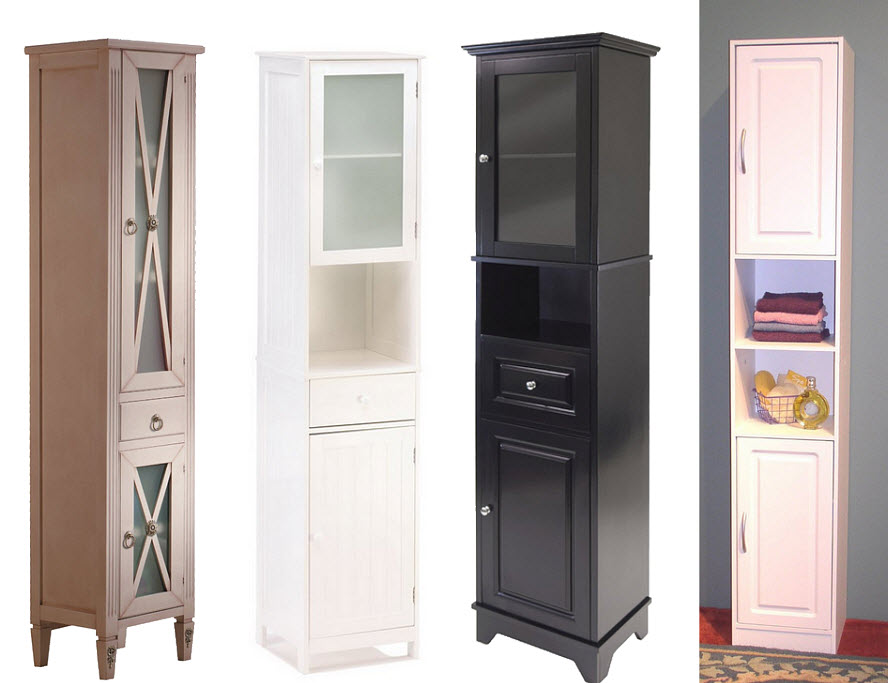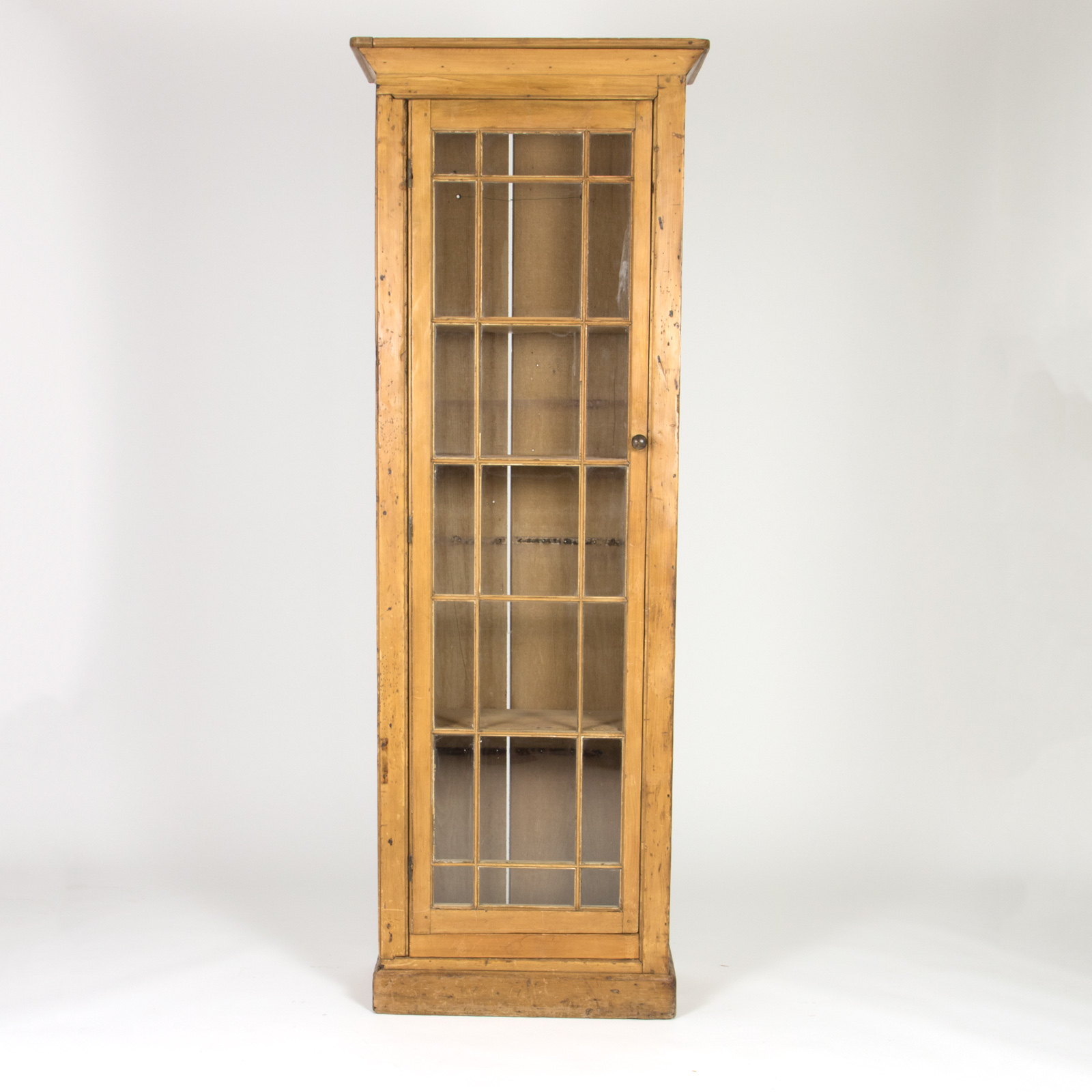Types of Narrow Cabinets with Doors

Narrow cabinets with doors offer a practical and stylish solution for maximizing storage space in any room. These cabinets come in a variety of styles, materials, and finishes, allowing you to choose the perfect option to complement your decor and meet your specific storage needs.
Narrow Cabinet Styles
Narrow cabinets with doors are available in a range of styles, each offering distinct advantages and disadvantages. Understanding these differences will help you select the best cabinet for your space and requirements.
- Built-in cabinets: These cabinets are integrated into the walls of a room, creating a seamless and integrated look. They are often custom-made to fit the specific dimensions of the space, maximizing storage efficiency. Built-in cabinets are typically made from wood, with various finishes available to match the surrounding décor.
- Advantages: Built-in cabinets offer a sleek and integrated look, maximizing space utilization and providing a custom fit for any room. They also tend to be more durable and long-lasting than freestanding cabinets.
- Disadvantages: Built-in cabinets are generally more expensive to install than freestanding cabinets and require professional installation. They also lack the flexibility of freestanding cabinets, as they cannot be easily moved or rearranged.
- Freestanding cabinets: These cabinets are independent units that can be placed anywhere in a room. They are available in various sizes, materials, and styles, offering flexibility in placement and customization. Common materials for freestanding cabinets include wood, metal, and plastic.
- Advantages: Freestanding cabinets are affordable, versatile, and easy to move or rearrange. They are also readily available in various sizes and styles, making them suitable for diverse storage needs.
- Disadvantages: Freestanding cabinets may not always fit seamlessly into a room’s design, and their appearance can be less integrated than built-in cabinets. They may also take up more floor space than built-in cabinets.
- Wall-mounted cabinets: These cabinets are attached to the wall, offering a space-saving solution that keeps items off the floor. They are typically made from wood, metal, or plastic, and come in various sizes and styles. Wall-mounted cabinets are ideal for storing lightweight items like books, decorative objects, or toiletries.
- Advantages: Wall-mounted cabinets maximize floor space and provide easy access to stored items. They also add a decorative element to the wall, creating a visual focal point.
- Disadvantages: Wall-mounted cabinets are generally designed for lighter items and may not be suitable for heavy storage. They may also require professional installation, depending on the cabinet’s size and weight.
- Corner cabinets: These cabinets are specifically designed to fit into the corner of a room, maximizing space utilization in tight areas. They are typically made from wood or metal and can be either freestanding or built-in. Corner cabinets offer a practical solution for storing items in awkward spaces, such as a bathroom or kitchen.
- Advantages: Corner cabinets effectively utilize often-wasted space, providing additional storage without taking up valuable floor area. They are available in various sizes and styles to fit different needs.
- Disadvantages: Corner cabinets may be more challenging to access than other cabinet styles, especially for items stored in the back corners. They may also require custom fitting for optimal placement.
Uses and Applications of Narrow Cabinets with Doors: Narrow Cabinet With Doors

Narrow cabinets with doors, despite their compact size, offer a surprising amount of versatility and can seamlessly integrate into various spaces within a home. Their ability to maximize storage potential while minimizing footprint makes them a popular choice for homeowners seeking to enhance functionality and organization.
Living Rooms
Narrow cabinets can be used to enhance the functionality of a living room. They can be used to store books, electronics, games, or other items that are often used in the living room. A narrow cabinet placed behind a sofa can serve as a discrete storage solution for remotes, blankets, and other frequently used items, keeping the living space tidy and clutter-free.
Bedrooms
In bedrooms, narrow cabinets can be utilized to create a sense of order and streamline the space. They can be used as nightstands, providing a convenient surface for a lamp, alarm clock, and other bedside essentials. Alternatively, they can be placed in a corner to store clothes, shoes, or other personal belongings, optimizing storage in a small bedroom.
Bathrooms, Narrow cabinet with doors
Narrow cabinets are a valuable addition to bathrooms, offering efficient storage for toiletries, towels, and other bathroom necessities. A narrow cabinet placed above the toilet can be used to store extra towels, toiletries, and cleaning supplies, while a tall, narrow cabinet in the corner can house linens and other bathroom essentials, maximizing space in a compact bathroom.
Kitchens
In kitchens, narrow cabinets can be used to create a more organized and efficient workspace. They can be used to store spices, cooking oils, and other frequently used kitchen items. A narrow cabinet placed next to the refrigerator can be used to store extra pantry items, creating a streamlined and organized pantry space.
Home Offices
Narrow cabinets can be incorporated into home offices to provide essential storage solutions for documents, office supplies, and other work-related items. A narrow cabinet placed next to a desk can be used to store files, folders, and other important documents, keeping the workspace neat and organized. Additionally, a narrow cabinet with doors can be used to house a printer, scanner, or other office equipment, providing a dedicated space for these essential tools.
Factors to Consider When Choosing a Narrow Cabinet with Doors

Choosing the perfect narrow cabinet involves more than just picking a stylish piece. It requires careful consideration of your specific needs and circumstances to ensure a functional and aesthetically pleasing addition to your space.
Space Limitations
Understanding the available space is crucial. Narrow cabinets are ideal for maximizing space in tight areas, but it’s important to assess the dimensions carefully.
- Measure the available space accurately: Measure the height, width, and depth of the area where you intend to place the cabinet.
- Consider the surrounding furniture: Ensure the cabinet fits comfortably without obstructing movement or access to other furniture.
- Account for door clearance: Allow sufficient space for the cabinet doors to open fully without hitting walls or other objects.
Storage Needs
Narrow cabinets can be surprisingly versatile, but understanding your storage needs will guide your choice.
- Identify the items you need to store: Determine the size and shape of the items you plan to store, such as books, clothes, or kitchen supplies.
- Consider the weight of the items: Choose a cabinet that can support the weight of your belongings.
- Assess the number of shelves: Decide if you need adjustable shelves or a fixed number of shelves to accommodate your storage needs.
Aesthetic Preferences
Narrow cabinets come in various styles, so aligning with your aesthetic is essential.
- Choose a style that complements your decor: Consider the overall style of your room and choose a cabinet that complements it.
- Select a color and finish that matches your preferences: Choose a cabinet that blends seamlessly with your existing furniture or creates a desired contrast.
- Consider the material: Options include wood, metal, or plastic, each offering a distinct aesthetic and durability.
Budget Constraints
Setting a budget helps narrow down the options and avoid overspending.
- Determine your price range: Consider the materials, features, and brand to get an idea of the cost.
- Explore different retailers and online marketplaces: Compare prices and features to find the best value for your budget.
- Consider used or refurbished options: These can offer significant savings while still providing functional storage.
Questions to Ask Yourself Before Purchasing
Before you head to the store or browse online, consider these questions:
- What is the primary purpose of the cabinet? Is it for storage, display, or both?
- What specific items will be stored in the cabinet? This will help determine the size, shelf configuration, and material needed.
- What style and color best complement the room? Consider the overall aesthetic and choose a cabinet that blends seamlessly.
- What is your budget for the cabinet? This will help narrow down the options and ensure you find a cabinet within your price range.
Measuring for a Narrow Cabinet
Accurate measurements are essential for a perfect fit.
- Measure the height, width, and depth of the space: Use a tape measure to get precise measurements.
- Consider any obstructions: Account for door swings, moldings, or other obstacles that might affect the cabinet’s placement.
- Measure the doorway or passageway: Ensure the cabinet can be moved through the doorway or passageway without any issues.
Narrow cabinet with doors – Yo, narrow cabinets with doors are totally rad for keeping your stuff organized, but sometimes you need something with a little more space. Check out this versatile wood 4 door floor cabinet white for a totally sick storage solution.
It’s perfect for any room and can hold all your stuff, so you can finally get rid of all that clutter. Narrow cabinets with doors are awesome, but this one is next level!
Yo, that narrow cabinet with doors is totally cramped, right? I’m thinking about giving it a makeover, like stripping the finish off the wood cabinets to make it look fresh. Check out this guide to refinishing cabinets – it’s totally legit! Once I’m done, that narrow cabinet will be the bomb.com!
